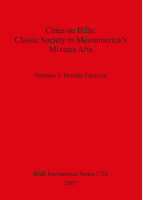Description
BOOK DESCRIPTIONThe study of secondary centres is crucial to understanding how a state functions, as they are important points of interaction between state authorities and ordinary households. In this work the author focuses on the nature of the political organization of the lower-level centres of the Early Classic Period (A.D. 200- 500) in the Mixteca Alta, Oaxaca, Mexico. A previous comparative analysis of architectural arrangements at secondary centers between the Valley of Oaxaca and the Mixteca Alta indicated that single plaza groups were the major form of public architecture. The author interprets these enclosed plaza groups as the residences of elite governing households suggesting dominance of secondary centres by single households in the Mixteca Alta. Conversely, in the Valley of Oaxaca secondary centres show a pattern of multiple enclosed plaza groups, indicating that multiple households shared administrative functions. The main questions addressed by the author are whether Mixteca Alta centres are characterized by a single plaza pattern, politically less centralized, or is there a broader span of control at the secondary level? Alternatively, do these single plaza groups suggest that the state vested power in single households? The focus of the research is onfour secondary centres of the Mixteca Alta. Using intensive site survey and systematic random collection as the main methods of data recovery, the author has collected artefacts over whole site areas in relation to public buildings. By comparing the distribution of various artefactcategories within the site limits, including costly goods, in relation to zones of the site containing public architecture, the author evaluates the degree of political centralization.











